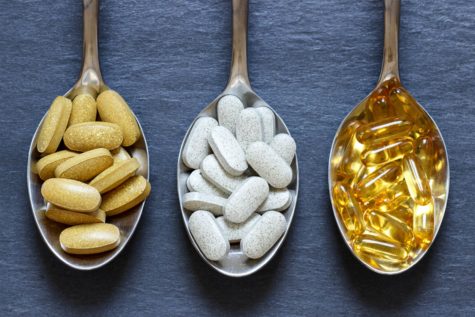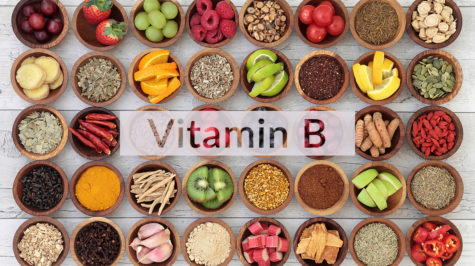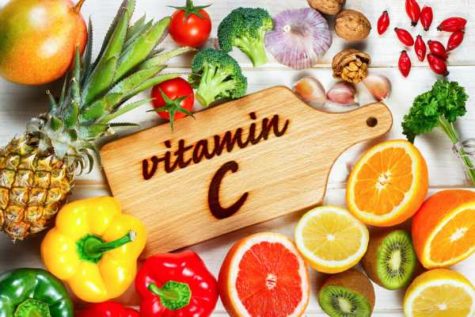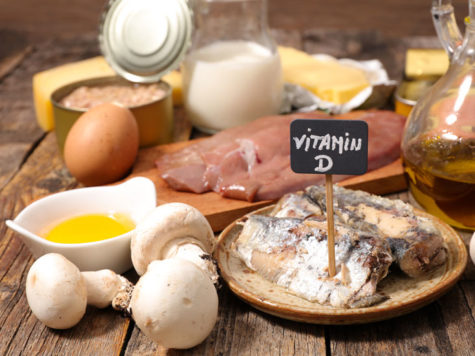The Importance of Vitamins

The word ‘ Vitamine’ meaning a vital amine was proposed by a Polish Researcher, Dr. Cacimir Funk, in 1911 to designate a new food substance which cured beri-beri. Other terms were proposed as new factors were discovered. But the word vitamin , with the final ‘e’ dropped, met with popular favor.
Vitamins are potent organic compounds which are found in small concentrations in foods. They perform specific and vital functions in the body chemistry. They are like electric sparks which help to run human motors. Except for a few exceptions, they cannot be manufactured or synthesized by the organism and their absence or improper absorption results in specific deficiency disease.
It is not possible to sustain life without all the essential vitamins. In their natural state they are found in minute quantities in organic foods. We must obtain them from these foods or in dietary supplements.
Vitamins, which are of several kinds, differ from each other in physiological function, in chemical structure and in their distribution in food. They are broadly divided into two categories, namely, fat-soluble and water-soluble.
Vitamins A, D, E and K are all soluble in fat and fat solvents and are therefore, known as fat-soluble. They are not easily lost by ordinary cooking methods and they can be stored in the body to some extent, mostly in the liver. They are measured in international units.
Vitamin B Complex and C are water soluble. They are dissolved easily in cooking water. A portion of these vitamins may actually be destroyed by heating. They cannot be stored in body and hence they have to be taken daily in foods. Any extra quantity taken in any one day is eliminated as waste. Their values are given in milligrams and micrograms, whichever is appropriate.
Vitamins, used therapeutically, can be of immense help in fighting disease and speeding recovery. They can be used in two ways, namely, correcting deficiencies and treating disease in place of drugs. Latest researches indicate that many vitamins taken in large doses far above the actual nutritional needs, can have a miraculous healing effect in a wide range of common complaints and illnesses.
Vitamin therapy has a distinct advantage over drug therapy. While drugs are always toxic and have many undesirable side effects, vitamins , as a rule are non-toxic and safe. The various functions of common vitamins, their deficiency symptoms, natural sources, daily requirements and their therapeutic uses are discussed in brief as follows:
Vitamin A
Known as anti-opathalmic, vitamin A is essential for growth and vitality. It builds up resistance to respiratory and other infections and works mainly on the eyes, lungs, stomach and intestines. It prevents eye diseases and plays a vital role in nourishing the skin and hair. It helps to prevent premature ageing and senility, increases life expectancy and extends youthfulness.
The main sources of this vitamin are fish liver oil, liver, whole milk, curds, pure ghee, butter, cheese, cream and egg yolk, green leafy and certain yellow root vegetables such as spinach, lettuce, turnip, beets, carrot, cabbage and tomato and ripe fruits such as prunes, mangoes, papaya, apricots, peaches, almonds and other dry fruits.
A prolonged deficiency of vitamin A may result in inflammation of the eyes, poor vision frequent colds, night blindness and increased susceptibility to infections, lack of appetite and vigor, defective teeth and gums and skin disorders.
The recommended daily allowance of vitamin A is 5,000 international units for adults and 2,600 to 4,000 international units for children. When taken in large therapeutic doses, which are usually 25,000 to 50,000 units a day, it is highly beneficial in the treatment of head and chest colds, sinus trouble, influenza and other infectious diseases. It is also valuable in curing night blindness and other eye diseases as well as many stubborn skin disorders.
This vitamin can be given up to 1,00,000 units a day for a limited period of four weeks under doctor’s supervision. In a recent year-long study, huge doses of vitamin A given twice a year reduced death by about 30 per cent among Indonesian children. This has raised the hope in the fight against a significant cause of childhood mortality in developing countries.
B Complex Vitamins
There are a large variety of vitamins in the B group, the more important being B1 or thiamine, B2 or riboflavin, B3 or niacin or nicotinic acid, B6 or pyridoxine, B9 or folic acid, B12 and B5 or pantothenic acid. B vitamins are synergistic. They are more potent together than when used separately.
- Thiamine
Known as anti-beberi, anti-neuritic and anti-ageing vitamin, thiamine plays an important role in the normal functioning of the nervous system, the regulation of carbohydrates and good digestion. It protects heart muscle, stimulates brain action and helps prevent constipation. It has a mild diuretic effect.
Valuable sources of this vitamin are wheat germ, yeast, the outer layer of whole grains, cereals, pulses, nuts, peas, legumes, dark green leafy vegetables, milk, egg,banana and apple.
The deficiency of thiamine can cause serious impairment of the digestive system and chronic constipation, loss of weight, diabetes, mental depression, nervous exhaustion and weakness of the heart.
The recommended daily allowance for this vitamin is about two milligrams for adults and 1.2 mg. for children. The need for this vitamin increases during illness, stress and surgery as well as during pregnancy and lactation. When taken in a large quantity, say up to 50 mg, it is beneficial in the treatment of digestive disorders, neuritis and other nervous troubles as well as mental depression.
For best results, all other vitamins of B group should be administered simultaneously. Prolonged ingestion of large doses of any one of the isolated B complex vitamins may result in high urinary losses of other B-vitamins and lead to deficiencies of these vitamins.
- Riboflavin
Vitamin B2 or riboflavin, also known as vitamin G, is essential for growth and general health as also for healthy eyes, skin, nails and hair. It helps eliminate sore mouth, lips and tongue. It also functions with other substances to metabolize carbohydrates, fats, and protein.
The main sources of this vitamin are green leafy vegetables, milk, cheese, wheat germ, egg, almonds, sunflower, seeds, citrus fruits and tomatoes.
Its deficiency can cause a burning sensation in the legs, lips and tongue, oily skin, premature wrinkles on face and arm and eczema.
The recommended daily allowance for this vitamin is 1.6 to 2.6 mg. for adults and 0.6 to one mg for children. Its use in larger quantities, say from 25 to 50 mg. is beneficial in the treatment of nutritional cataracts and other eye ailments, digestive disturbances, nervous depression, general debility, and certain types of high blood pressure.
- Niacin
Vitamin B3 or niacin or nicotinic acid is essential for proper circulation, healthy functioning of the nervous system and proper protein and carbohydrate metabolism. It is essential for synthesis of sex hormones, cartisone, thyroxin and insulin. It is contained in liver, fish, poultry, peanut, whole wheat,green leafy vegetables, dates, figs, prunes and tomato.
A deficiency can lead to skin eruptions, frequent stools, mental depression, insomnia, chronic headaches, digestive disorders and anemia.
The recommended daily allowance is 12 to 20 mg. for adults and 4.8 to 12 mg. for children. Large doses of this vitamin say up to 100 mg. with each meal, preferably together with other B group vitamins, affords relief in case of migraine and high blood pressure caused by nervousness, high cholesterol and arteriosclerosis.
- Pyridoxine
Vitamin B 6 or pyridoxine is actually a group of substance – pyridoxine, pyridoxinal and pyridoxamine – that are closely related and function together. It helps in the absorption of fats and proteins, prevents nervous and skin disorders and protects against degenerative diseases.
The main sources of this vitamin are yeast, wheat, bran, wheat germ, pulses, cereals, banana, walnuts, soy beans , milk, egg, liver, meat and fresh vegetables. Deficiency can lead to dermatitis, conjunctivitis, anemia, depression, skin disorders, nervousness, insomnia, migraine headaches and heart disease.
The recommended daily requirement is 2.0 mg. for adults and 0.2 mg. for children. This vitamin used therapeutically from 100 to 150 mg. daily can relieve painful joints and the discomforts of pregnancy and pre-menstrual symptoms.
Vitamin B6 is now the most intensively studied of all vitamins. Researches are on the threshold of a number of promising developments involving treatments of various ailments with this vitamin. They include hyperactivity in children, asthma, arthritis, kidney stones, blood clots in heart attack victims and nervous disorders.
- Folic Acid
Vitamin B9 or folic acid, along with vitamin B12 is necessary for the formation of red blood cells. It is essential for the growth and division of all body cells for healing processes. It aids protein metabolism and helps prevent premature graying.
Valuable sources of this vitamin are deep green leafy vegetables such as spinach, lettuce, brewers yeast, mushrooms, nuts, peanuts and liver.
A deficiency can result in certain types of anemia, serious skin disorders, loss of hair, impaired circulation, fatigue and mental depression.
The minimum daily requirement of this vitamin is 0.4 mg. To correct anemia and deficiencies 5 mg or more are needed daily. Some authorities believe that folic acid is contraindicated in leukemia and cancer.
- Pantothenic Acid
Vitamin B5 or pantothenic acid helps in cell building, maintaining normal growth and development of the central nervous system. It stimulates the adrenal glands and increases the production of cortisone and other adrenal hormones. It is essential for conversion of fatty and sugar to energy. It also helps guard against most physical and mental stresses and toxins and increases vitality.
The main sources of this vitamin are whole grain bread and cereals, green vegetables,peas , beans, peanuts and egg yolk. It can be synthesized in the body by intestinal bacteria. A deficiency can cause chronic fatigue, hypoglycemia, graying and loss of hair, mental depression, stomach disorders, blood and skin disorders.
The minimum daily requirement of this vitamin has not been established, but is estimated to be between 30 and 50 mg a day. The usual therapeutic doses are 50 to 200 mg. In some studies, 1,000 mg or more were given daily for six moths without side effects. It is useful in the treatment of insomnia, low blood pressure and hypoglycemia or low blood sugar.
- Vitamin B12
Vitamin B12 or cobolamin, commonly known as “red vitamin” , is the only vitamin that contains essential mineral elements. It is essential for proper functioning of the central nervous system, production and regeneration of red blood cells and proper utilization of fat, carbohydrates and protein for body building. It also improves concentration, memory and balance.
Valuable sources of this vitamin are kidney, liver, meat, milk, eggs, bananas and peanuts. Its deficiency can lead to certain types of anemia, poor appetite and loss of energy and mental disorders.
The recommended daily allowance of this vitamin is 3 mcg. Taken in large therapeutic doses from 50 to 100 mcg., it is beneficial in the treatment of lack of concentration, fatigue, depression, insomnia and poor memory.
Vitamin C
Vitamin C or ascorbic acid is essential for normal growth and the maintenance of practically all the body tissues, especially those of the joints, bones, teeth, and gums. It protects one against infections and acts as a harmless antibiotic. It promotes healing and serves as protection against all forms of stress and harmful effects of toxic chemicals. It helps prevent and cure the common cold. It also helps in decreasing blood cholesterol.
This vitamin is found in citrus fruits, berries, green and leafy vegetables, tomatoes, potatoes, sprouted sprouted bengal (a variety of chickpea) and green grams (mung beans).
A deficiency can cause scurvy marked by weakness, anemia, bleeding gums and painful and swollen parts, slow healing of sores and wounds, premature ageing and lowered resistance to all infections.
The recommended daily allowance is 50 to 75 mg. for adults and 30 to 50 mg. for children. Smokers and older persons have greater need for vitamin C. It is used therapeutically in huge doses from 100 to 10,000 mg. a day.
It prevents and cures colds and infections effectively, neutralizes various toxins in the system, speeds healing processes in virtually all cases of ill health, increases sexual vitality and prevents premature ageing. According to Dr. Linus Pauling, a world famous chemist and nutrition expert, ” because vitamin C is one of the least toxic vitamins, it is very safe to use in high doses. ” Your body will take exactly what it needs and excrete any excess naturally.”
Vitamin D
Vitamin D is necessary for proper bone and teeth formation and for the healthy functioning of the thyroid gland. It assists in the assimilation of calcium, phosphorus and other minerals from the digestive tract.
This vitamin is found in the rays of the sun, fish, milk, eggs, butter and sprouted seeds. A deficiency can cause gross deformation of bones and severe tooth decay.
The recommended daily allowance of this vitamin for both adults and children is 400 to 500 international units. Therapeutically, up to 4,000 to 5,000 units a day for adult or half of this for children, is a safe dose, if taken for not longer than one month.
It is beneficial in the treatment of muscular fatigue, constipation and nervousness. It can be toxic if taken in excessive doses, especially for children. Signs of toxicity are unusual thirst, sore eyes, itching skin, vomiting, diarrhea, urinary urgency, abnormal calcium deposits in blood vessel walls, liver, lungs, kidneys and stomach.
Vitamin E
Vitamin E is essential for normal reproductive functions, fertility and physical vigor. It prevents unsaturated fatty acids, sex hormones and fat soluble vitamins from being destroyed in the body by oxygen. It dilutes blood vessels and improves circulation. It is essential for the prevention of heart diseases, asthma, arthritis, and many other conditions.
It is available in wheat or cereals germ, whole grain products, green leafy vegetables, milk, eggs, all whole, raw or sprouted seeds and nuts.
Its deficiency can lead to sterility in men and repeated abortions in women, degenerative developments in the coronary system, strokes and heart disease.
The official estimated requirement of this vitamin is 15 international units. Expert nutritionists estimate the actual requirement at 100 to 200 I.U. a day. The therapeutic doses are from 200 to 2400 I.U. daily.
It is beneficial in the treatment of various forms of paralysis, diseases of the muscles, atherosclerotic heart disease by diluting blood vessels. It prevents formation of scars in burns and post-operation healing. It protects against many environmental poisons in air, water and food. It also has a dramatic effect on the reproductive organs and prevents miscarriage, increases male and female fertility and helps to restore male potency.
Vitamin K
Vitamin K is necessary for the proper clotting of blood, prevention of bleeding and normal liver functions. It aids in reducing excessive menstrual flow.
This vitamin is contained in egg yolk, cow’s milk, yogurt, alfalfa, green and leafy vegetables, spinach, cauliflower, cabbage and tomato. Its deficiency can lead to sufficient bile salts in the intestines, colitis, lowered vitality and premature ageing.









Leave a Reply